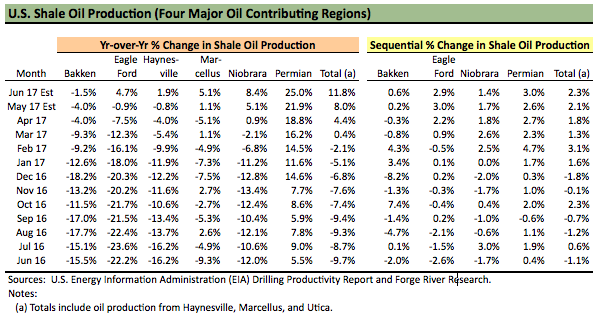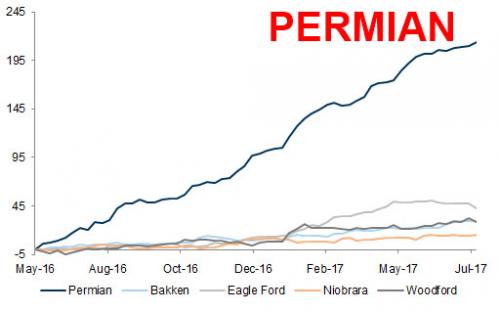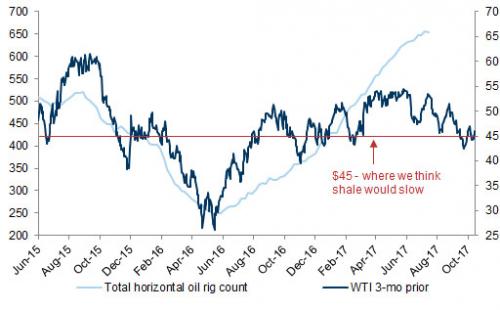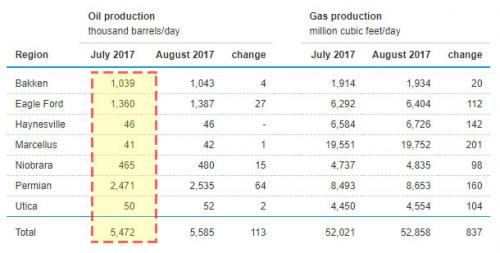One month ago, we reported that based on recent data, June oil output from shale producers would post the first double-digit production growth since July of 2015, when oil prices tumbled and a substantial portion of US production was briefly taken offline. While the final data has yet to be tabulated, it is safe to say that this is now the case.

Indicatively, while over the past year total U.S. production was up roughly 525kb/d, virtually all of it, or 98.5%, was the result of horizontal rig production in the Permian Basin, where output rose by just over half a million barrels per day.
The Permian basin has been leading the increase in horizontal oil rig count (+184%)

Also of note is that while US rig shows not signs of slowing yet, in its latest Weekly Oil Rig Monitor, Goldman predicted that $45/bbl is the price below which shale output would finally slow, although that price may also prove a substantial hurdle for many gulf budgets, whose all in cost of production – including mandatory and discretionary government outlays – is roughly the same if not higher.
Rig count (lhs), WTI spot prices (rhs, $/bbl, 3-mo lag)

But what is more notable, is that according to the June EIA Drilling Prodctivity Report forecast, in July total shale (note: not total) basin output would rise by 127kb/d from May’s 5.348mmb/d, and hit 5.475 mmb/d, surpassing the previous record of 5.46 mmb/d reached in March 2015. Today the EIA released its latest Drilling Productivity Report, and while the number is not official just yet, it is safe to say that as of July, the total US shale basin is producing a record amount of crude oil, which the EIA pegged at 5.472mmb/d, up almost exactly as predicted, and is expected to rise by a further 113kb/d in August to a new all time high of 5.585mmb/d.

A look at the productivity breakdown, reveals the following picture:















No Comments